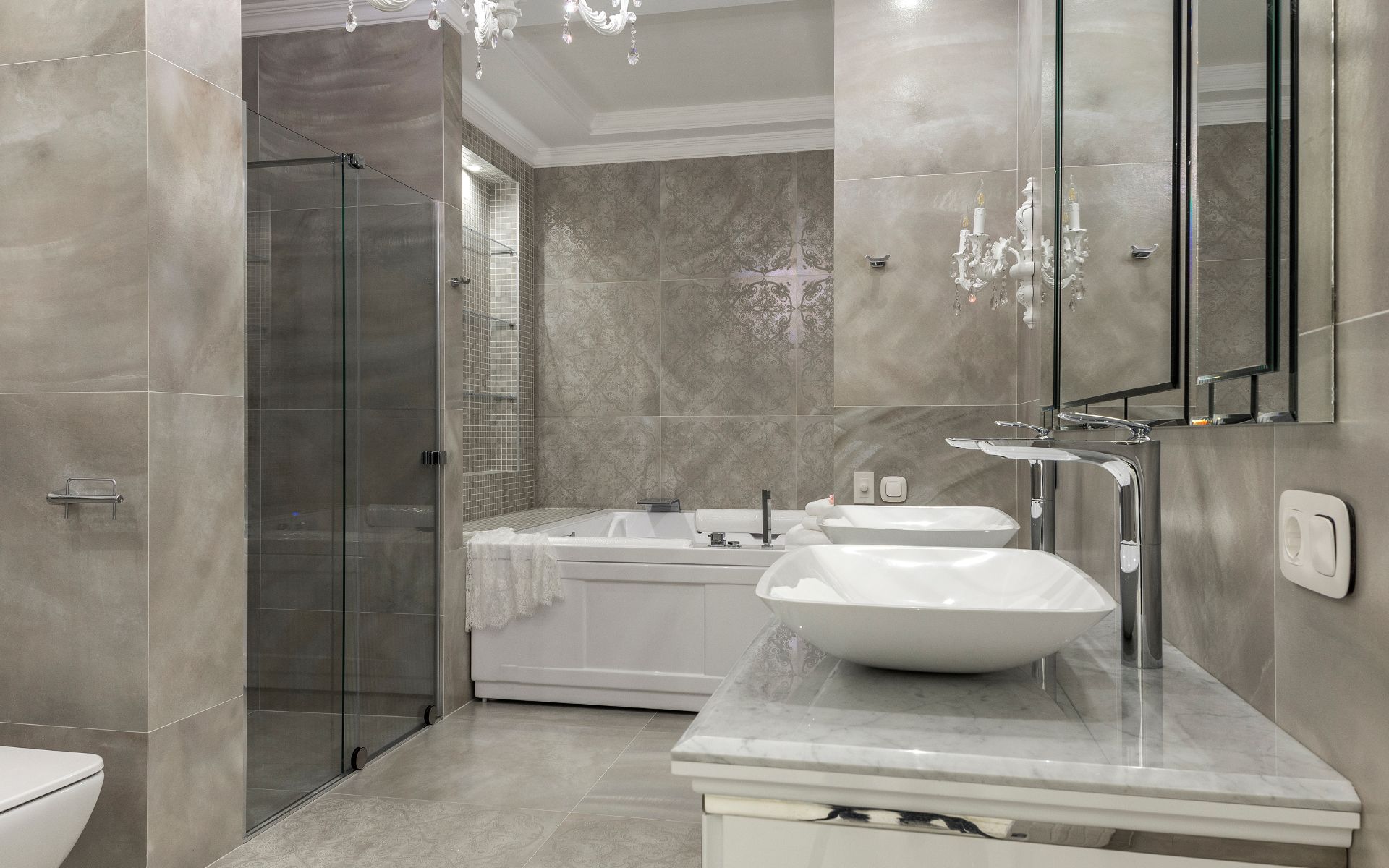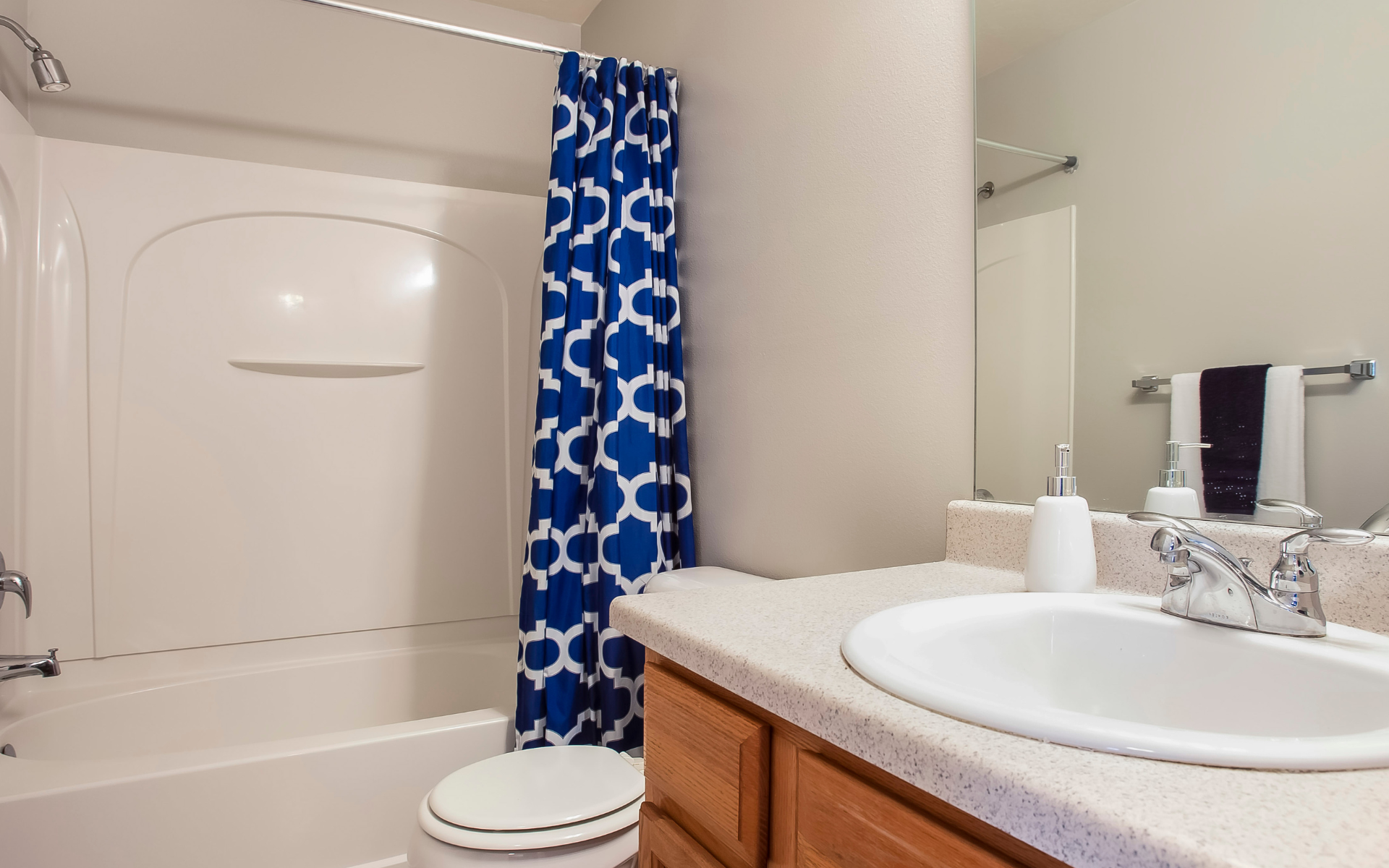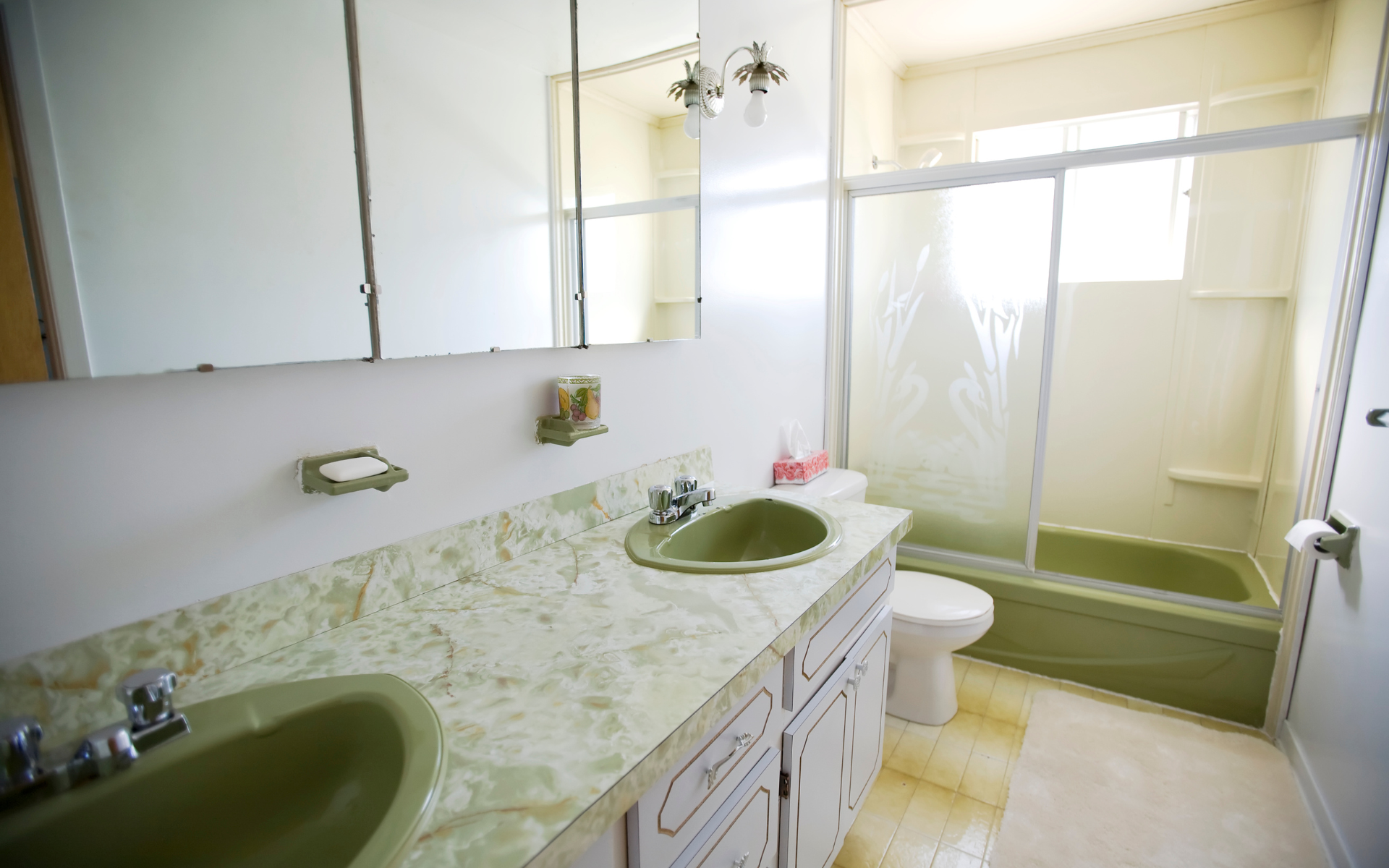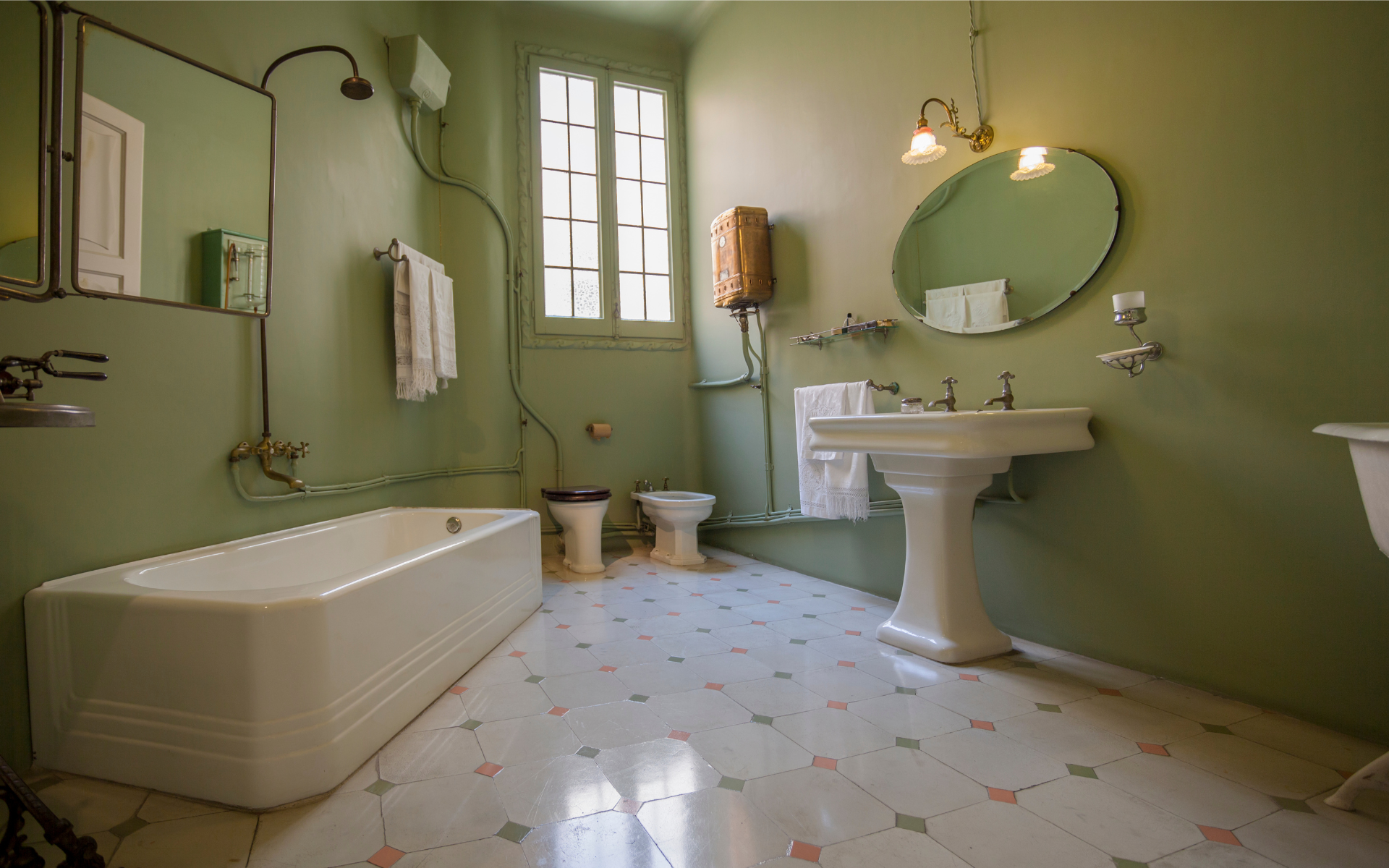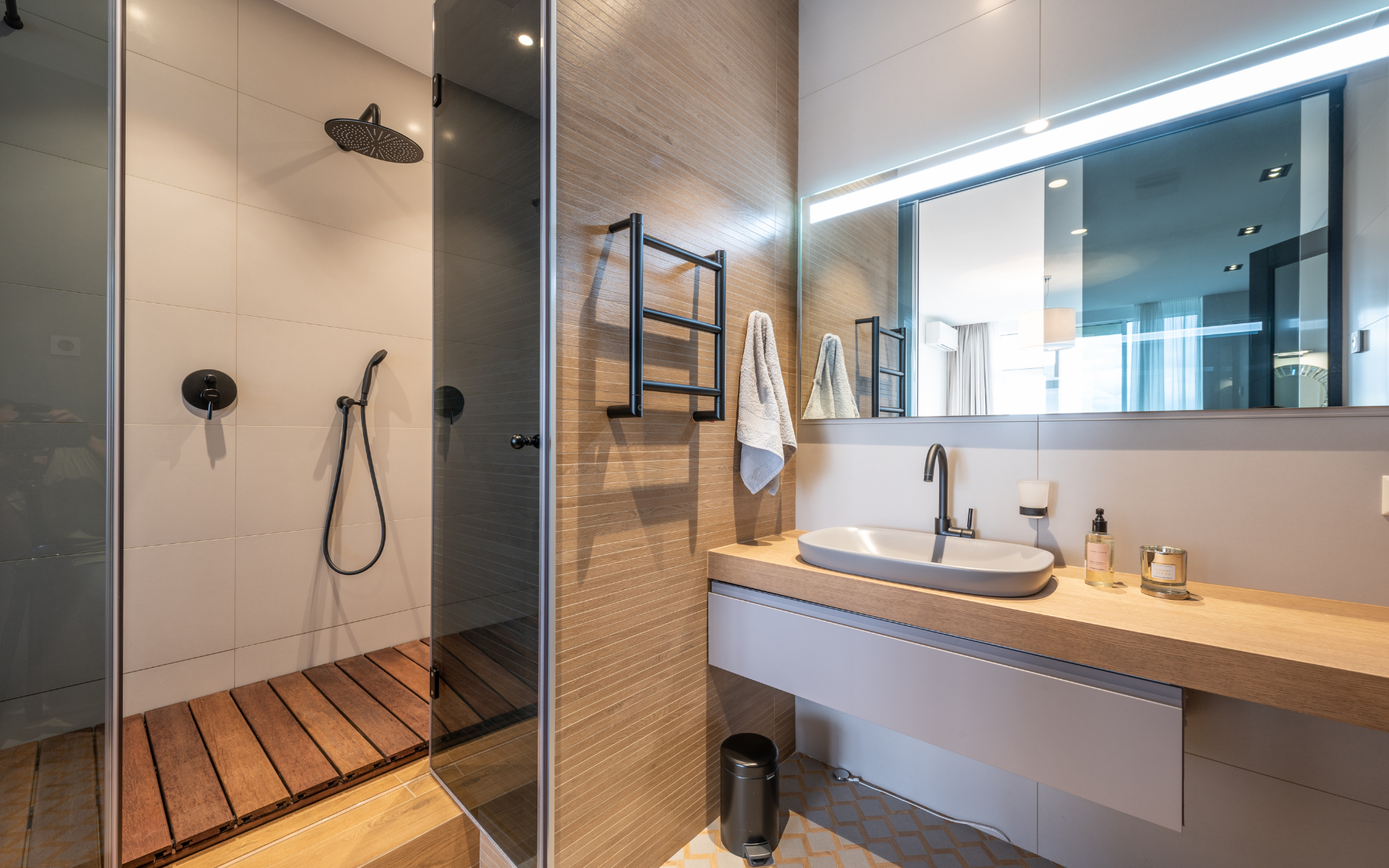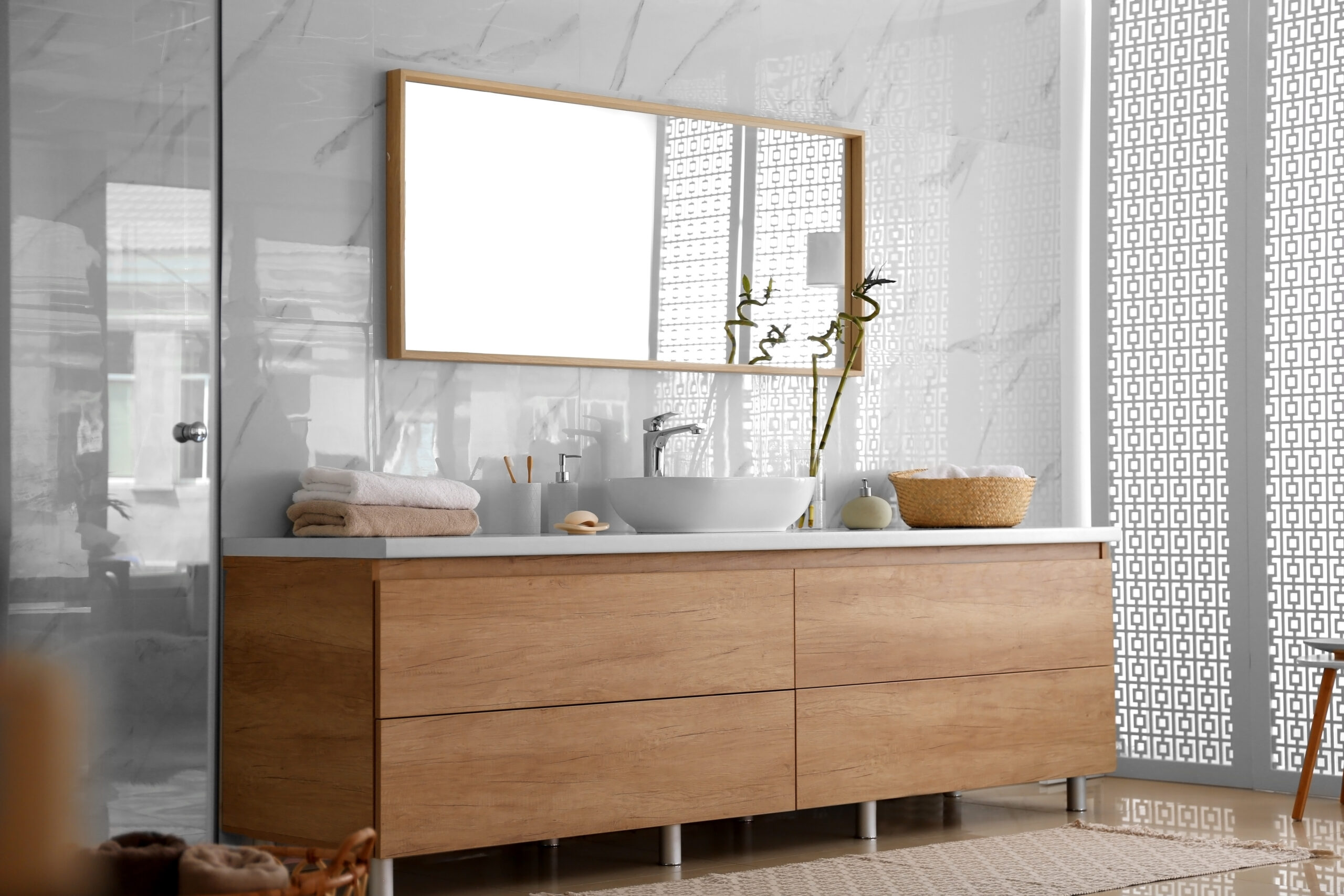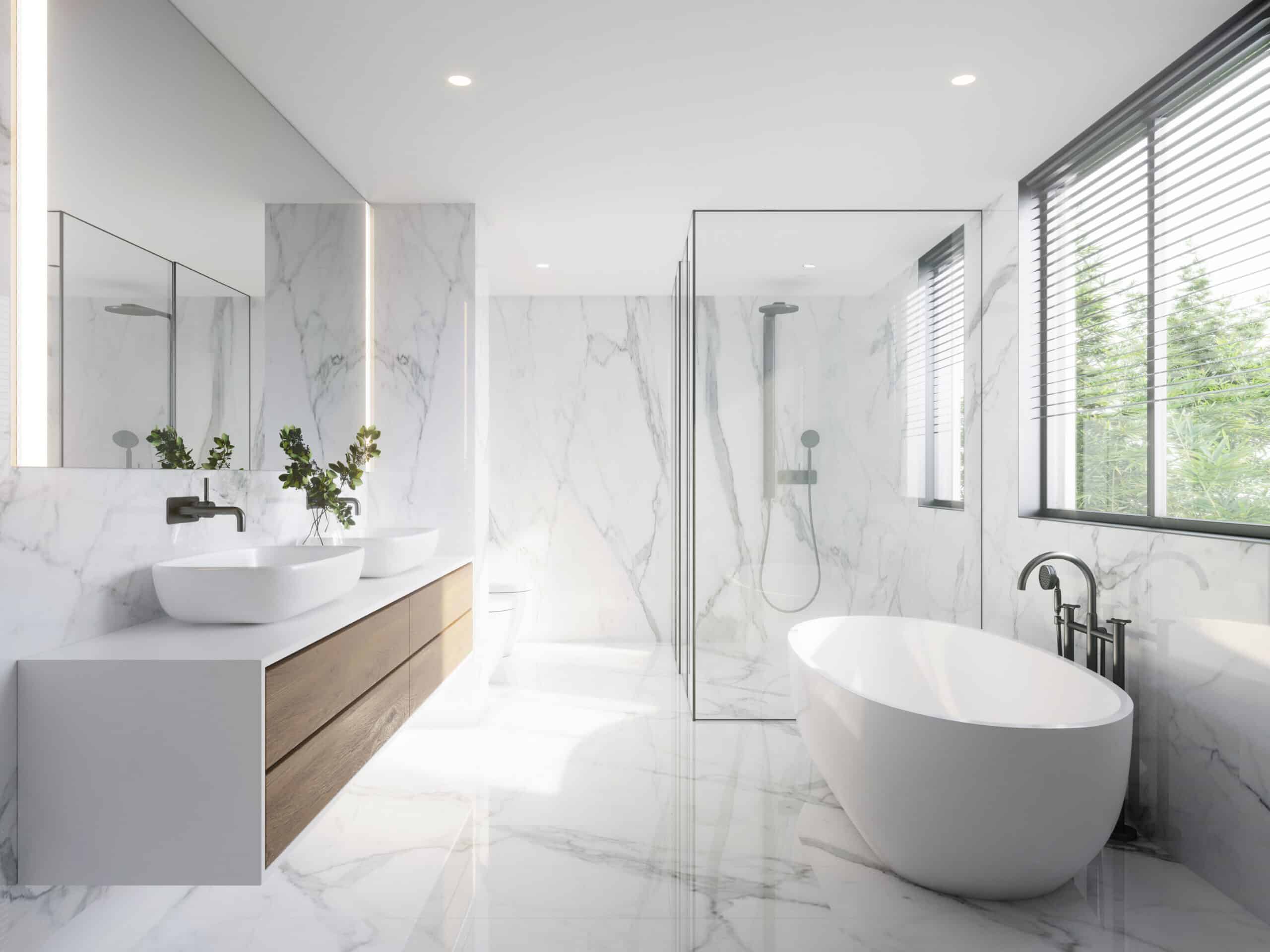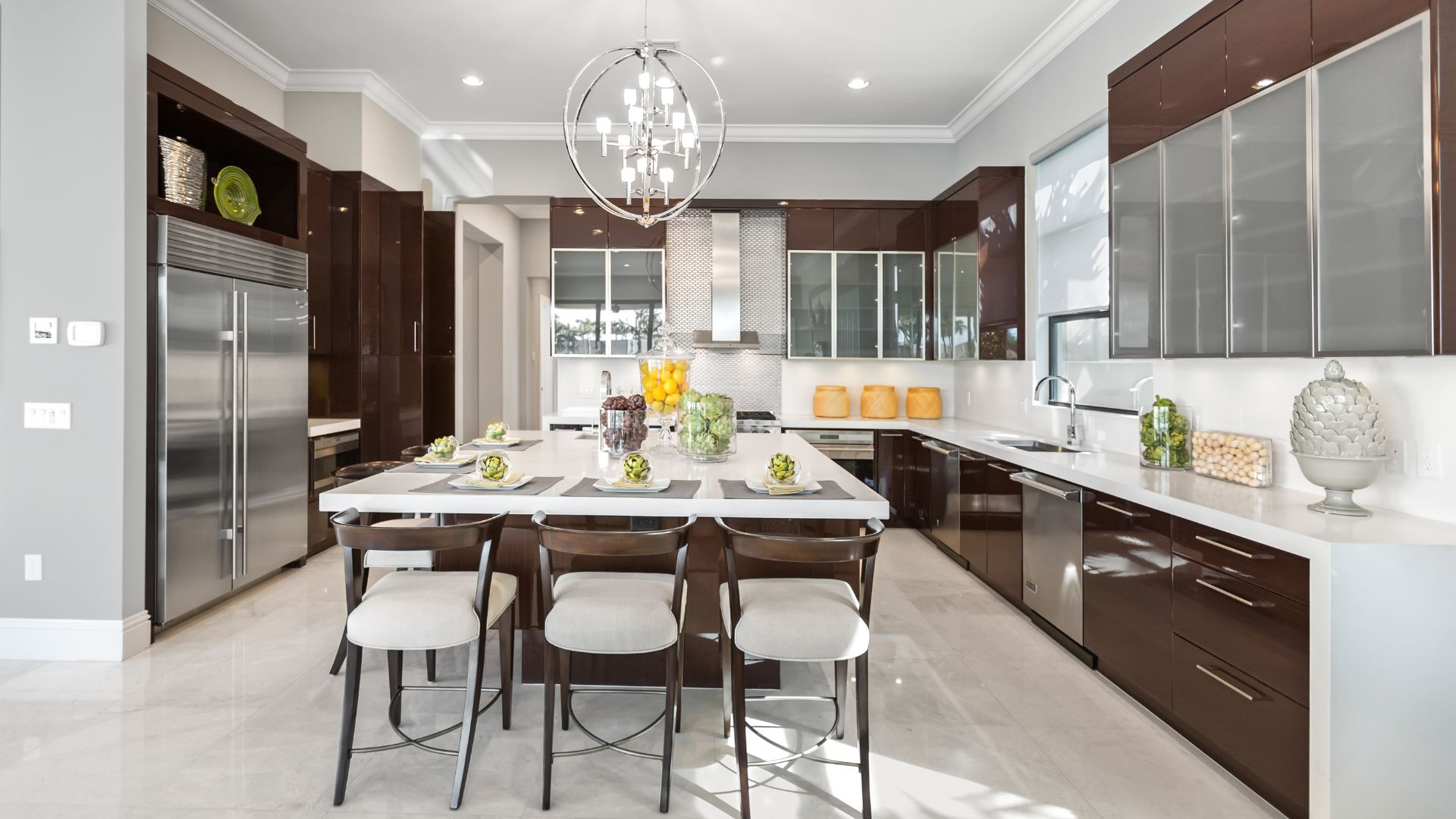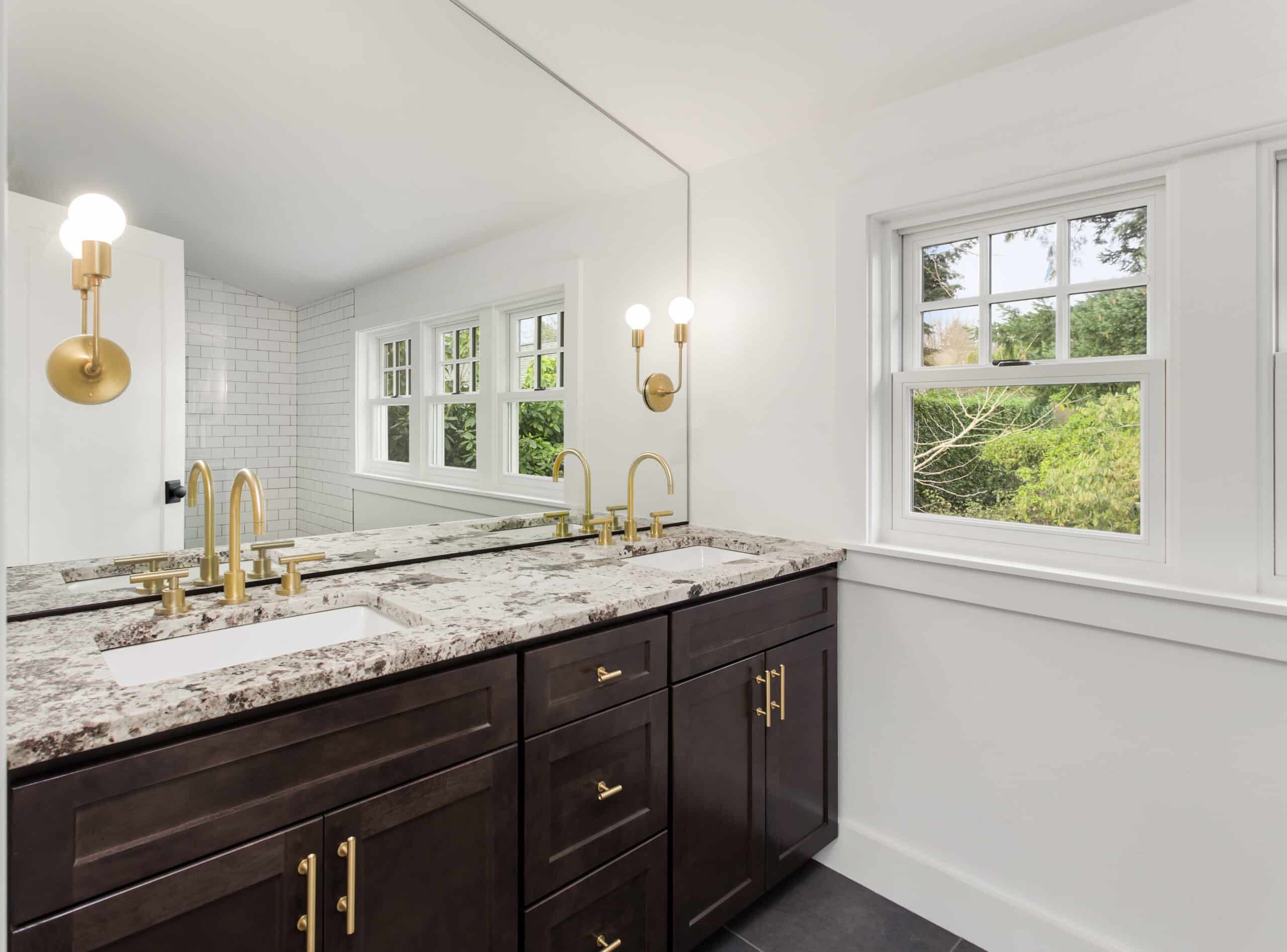Is your bathroom starting to show its age? Those cracks in the grout, the slow-draining tub, and the outdated light fixtures may be subtle signs that your bathroom is due for an upgrade. Ignoring these warning signs can lead to bigger problems down the road with mold, leaks, and damage.
Don’t wait until you have a full-on bathroom emergency to take action. Pay attention to the telltale clues like chipping tiles, loud vent fans, and faulty faucets. These little frustrations usually get worse over time, leading to huge headaches. Use this article as your guide to identifying when it’s time to renovate your worn and weary washroom. We’ll explore the seven major red flags so you can breathe new life into your bathroom before lackluster fixtures totally tank. Before you hire a kitchen and bathroom company, tackling bathroom upgrades proactively saves you money, mess, and misery in the long run.
1. Inadequate Storage
Limited storage space in your bathroom can make it feel cluttered and disorganized. Here are some common signs that your bathroom needs more storage solutions:
- Countertops are crowded with personal items like makeup, hair products, lotions, and multiple toothbrush holders, leaving minimal open space
- Floor space feels tight and small due to several freestanding storage shelves and cabinets located around the perimeter
- Most of your under-sink and medicine cabinets are packed full even after removing seldom-used items
- You have to store many basic bathroom essentials like towels, toilet paper, cleaning supplies in bedroom closets or other rooms in your home due to lack of space
- There is no place to neatly organize and conceal items like hairdryers, curling irons, and straighteners when not in use
Upgrading your storage capacity with organizational solutions like more shelves and cabinets, slide-out drawers, built-in wall niches, under-sink pull-out cabinets, and other smart solutions can help declutter your space. Consider creative use of wasted wall space, the back of doors, pedestal sinks, and more unique areas to add functional storage.
2. Mold and Mildew
The hot, humid environment caused by daily showers and baths makes any bathroom prone to mold and mildew growth over time. Here are some clear signs you may have a moisture issue that requires an upgrade:
- Black, dark green, or gray spots frequently form around sinks, showers, tub surfaces, tiles, or caulking due to excess moisture
- Visible mold damage in grout lines even after using bathroom mold cleaners
- Musty, earthy odors come from sink basins, shower stalls, or bathroom ventilation fan areas
- Wall corners, drywall behind toilets, or upper ceiling areas show stains or other signs of moisture damage and deterioration
Too much moisture enables microscopic mold spores floating in the air to take hold and multiply. They can gradually damage surfaces and your health if left unchecked. Upgrading your bathroom’s moisture prevention systems is key. This may involve installing powerful exhaust fans, special mold-inhibiting paint, permeable grout, and antimicrobial caulk. Also, ensure proper ventilation reaches all areas of your bathroom.
3. Constant Clogging
Is your bathroom regularly disrupted by clogged drains and toilets? Recurring clogs indicate your bathroom needs plumbing upgrades. Here are some of the most common clues:
- Toilets require multiple flushes, hold water too long, or have perpetually sluggish refill times
- Sinks and showers drain very slowly, leaving standing water long after use
- Bathtubs take longer to drain, sometimes not fully emptying by the end of a shower
- Strange gurgling sounds come from the main drain pipes, especially when using water
The reasons behind constant clogs generally come down to two culprits – years of mineral buildup or accumulation of hair, soap scum, and other debris inside pipes. Upgraded plumbing can remedy issues by replacing corroded galvanized steel pipes with smooth PVC piping. Installing higher capacity pipes and drains often fixes congestion points prone to backups. Consider a full re-route if your drainage layout allows bottleneck areas.
4. Outdated Appearance
Tastes change over time. What was once a stylish bathroom may now seem outdated and boring. Common signs of an outdated bathroom include old tile, worn fixtures, and unappealing color schemes.
While appearance may seem trivial, an outdated look often reflects functionality issues. For example, avocado green tile from the 1970s may contain asbestos. Or a pink tub and toilet from the 1950s could contain lead paint. Old surfaces become brittle and prone to cracking over time.
During a bathroom upgrade, choose neutral colors and classic materials like subway tile and porcelain. Brass and chrome finishes suit traditional and modern designs. Update the look of your bathroom while also improving safety. With fresh new surfaces and fixtures, enjoy a bathroom that both functions well and provides aesthetic appeal.
5. Poor Lighting
Do you strain to see while applying makeup or styling your hair? Dim lighting makes it hard to properly groom. Poor visibility can even make bathrooms seem smaller and outdated.
Many older bathrooms rely on a single overhead light fixture. This often casts shadows while getting ready. Insufficient lighting also contributes to accidents and falls, especially for older adults.
When upgrading your bathroom, consider adding more lighting. Pot lights, sconces, and undercabinet lighting brighten up grooming areas. Nightlights, motion-sensor lights, and dimmers also improve safety and ambiance. With better illumination placed in key areas, you can comfortably use your upgraded bathroom anytime.
6. Water Damage
Small leaks may go unnoticed at first. But over time, water damage can take a major toll on your bathroom. Warped cabinets, bubbling paint, and spongy floors all indicate serious moisture issues. Left unaddressed, water damage allows mold to take over and corrodes surfaces.
To save on bathroom remodeling costs, ensure waterproofing protects all walls and floors. Choose water-resistant materials like Quartz counters and luxury vinyl plank flooring. Replace old valves, supply lines, and drains with updated fixtures. Careful waterproofing measures now prevent costly repairs later on. Investing in moisture protection provides long-term peace of mind.
7. Leaks
One constant drip may seem harmless. But even minor leaks add up over time. Faucet drips and running toilets can waste hundreds of gallons of water annually. Such leaks boost your utility bills unnecessarily. More problematically, leaks provide a gateway for water damage and mold growth in hidden crevices.
As part of a bathroom upgrade, carefully inspect all fixtures for leaks. Look for rust spots and mineral deposits that indicate small leaks. Confirm toilets fill and shut off properly. Replace any leaky gaskets, washers, and valves. New water-efficient faucets and toilets conserve water and save on monthly bills. Moreover, preventing leaks now avoids water emergencies waiting to happen.
Are Your Fixtures Showing Signs of Their Age?
Do your bathroom fixtures look outdated and worn? Cracks, stains, and discoloration not only appear unsightly but indicate bigger issues. Outdated fixtures have likely surpassed their lifespan and need replacement.
Older toilets with flush tanks and valves are notoriously faulty. If your toilet requires jiggling the handle to fully flush or refill, its internal parts are wearing out. Constant repairs may temporarily fix problems but don’t address underlying aging. A new water-efficient toilet offers superior flushing power.
Check faucets for drips, leaks, and loose handles too. Corrosion and mineral deposits limit function over decades of use. Newer faucet technology includes conveniences like touchless activation and specialized spray modes.
In the shower, examine tiles, grout, and caulking. Missing or moldy grout provides pathways for water intrusion behind walls. Re-grouting and re-caulking provide only short-term solutions before mold and mildew return. Replace aging surfaces with moisture-resistant materials.
During your bathroom remodel, swap out worn fixtures and surfaces for updated versions. Enjoy advanced features, lasting protection, and design continuity throughout your refreshed bathroom. No more frustration over failing old fixtures or constant repairs.
Changing Household Needs Require Updates
Has your family size or lifestyle needs changed over the years? What worked well for your bathroom’s original design may no longer apply.
For growing families, more occupants mean fighting over limited sinks and toilet space. Children require bathroom access for brushing their teeth and potty training. Teenagers need ample counters and electrical outlets too. An expanding family needs a bathroom suited for multiple users.
Likewise, aging-in-place requirements call for ADA-compliant accessibility. Walk-in showers with seats and grab bars boost safety for those with mobility issues. Higher toilets and ergonomic fixtures also assist with daily living tasks.
Bathroom usage and needs evolve as life situations change. Don’t settle for less comfort and convenience. Minor renovations easily adapt bathrooms when requirements shift. Consider easy DIY changes like:
- Adding a vessel sink, maple cabinets, and modern light fixtures
- Swapping a tub for an open shower with subway tile
- Replacing a standard toilet with a comfortable height model
- Widening doorways and removing thresholds for wheelchair access
HGTV is a top authority in home design and renovation guidance. Their advice helps homeowners identify issues signaling a bathroom remodel and determine the appropriate scale upgrades to address problems.
With smart planning, transform your outdated or ill-suited bathroom into one meeting revised needs. Seek inspiration from remodeling TV shows, websites, or catalogs. Build a vision board to hone plans. Use online floor planners to map changes within your existing space and budget.
To Sum Up
Realizing your bathroom needs fixes can be a pain, but tackling issues early saves you time and money later on. Little things like cracked tiles and drain clogs often turn into big leaks, flooding, mold growth, or other emergencies if you wait too long. Upgrading before a major disaster strikes lets you renovate your schedule.
Keep an eye out for the seven-bathroom warning signs we talked about, from lacking storage space to constant pipe clogs. Don’t cross your fingers that the issues will disappear. Give your worn-out bathroom the makeover it needs so you can enjoy the space again. Schedule upgrades when it works for your budget rather than waiting until something breaks.
With smart renovation planning, you can avoid urgent last-minute repairs. Although bathroom upgrades mean an upfront cost, it’s worth it to boost your home’s value, get easily washable surfaces, and make mornings less stressful. Tackling annoying problems now also means your revitalized bathroom stays looking great year after year before needing more work down the road.

